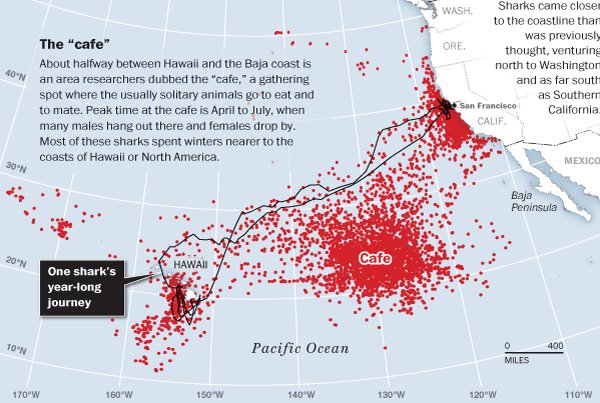White Shark Migrations

Where do white shark migrate to and how do we track them, and what does this mean for white sharks worldwide?
This is a very tough question to answer, especially since white sharks travel all oceans except the Arctic and Antarctic and it is very difficult to keep track of them.
We know at least one shark that was satellite tagged in Gansbaai travelled all the way to the West coast of Australia in about 3 months. This shark, named “Nicole”, then travelled back to the East coast of South Africa in another 9 months. Some of the other sharks stayed around the coasts of South Africa, with one heading south towards Marion Island!
This is important for conservation since white sharks are protected in South African waters, but may not be in Mozambique or Kenyan waters (where South African sharks have travelled before). So in order to best protect trans-oceanic species, we need a world-wide approach to their protection, not just a country by country basis!

_1420x587_crop_80.jpg)






